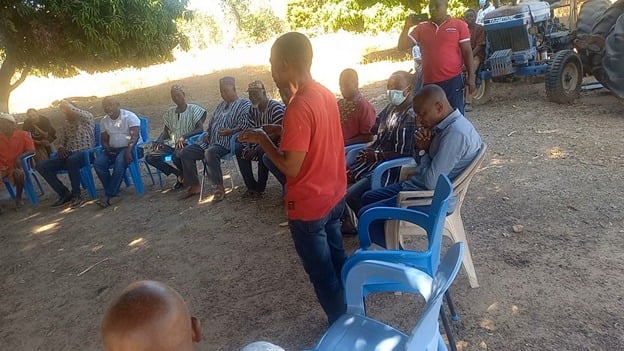The Ho Technical University (HTU) is embarking on an ambitious project to establish model baobab farms in the Volta and Upper West Regions of Ghana. This initiative aims to combat desertification, mitigate climate change, and empower local communities. With the support of Atmosmare, Finland, HTU plans to plant 2,000 baobab trees, 1,000 in each region, during the current year. The project leverages the expertise of HTU’s Baobab Research Team, led by Professor Kenneth Fafa Egbadzor, Head of the Department of Agricultural Sciences and Technology.
The selection of the Upper West Region as a project site followed a thorough stakeholder engagement process. The HTU delegation visited Tanchara, near Babile, to meet with the community chief, elders, and residents. During these meetings, the project concept and the significant achievements of HTU’s baobab research were presented. The community expressed enthusiasm for the project, recognizing its potential benefits, and pledged their support towards its successful implementation. This participatory approach ensures the project’s alignment with local needs and promotes community ownership.
The initial project plan underwent adjustments following discussions with the community. Challenges such as potential damage from roaming domestic animals and the extended drought periods in the region were raised. To address these concerns, a collaborative strategy was developed. The community agreed to explore innovative methods for protecting the young baobab plants from animals. Furthermore, the planting schedule was adjusted to coincide with the onset of rains, and provisions were made for supplementary watering if needed. This proactive approach demonstrates the project’s adaptability and commitment to sustainable practices.
In light of the community’s strong support and commitment, the initial target of planting baobab trees was doubled from 1,000 to 2,000. Nursery bags have been provided to the Tanchara Agricultural Station to facilitate seedling propagation. The distribution of seedlings to individual farmers will be based on their capacity to nurture the young trees. Additionally, some seedlings will be planted as avenue trees within the community, further enhancing the environmental and aesthetic value of the project.
The Chief of Tanchara, Naa Naalukon-yi Waale II, expressed deep gratitude to the HTU team for selecting their community as a beneficiary of this vital project. He reaffirmed the community’s readiness and willingness to actively participate in the initiative. The community recognizes the multifaceted benefits of the project, including environmental protection, economic opportunities, and community development. The chief’s endorsement underlines the importance of traditional leadership in facilitating community-based projects.
The HTU team’s visit included a tour of the Tanchara Agricultural Station Facility, which features sustainable agriculture fields, a plant nursery, and an office facility. This tour provided valuable insights into the existing agricultural infrastructure and the potential for integration with the baobab project. The project builds upon the groundbreaking research conducted by HTU’s Department of Agricultural Sciences and Technology in 2021. The team successfully re-engineered baobab seedlings for domestic multiplication, significantly reducing the time it takes for the trees to reach the flowering stage. This innovation has profound implications for the long-term viability and impact of baobab cultivation.
Traditionally, baobab trees in West Africa take at least 14 years to flower, with some taking as long as 27 years. However, HTU’s re-engineering techniques have drastically reduced this timeframe. In a controlled environment, a re-engineered baobab seedling reached the flowering stage in just 27 months, even after enduring various stresses, including damage from stray animals and human activity. This remarkable achievement underscores the resilience of the baobab, often referred to as the “wooden elephant,” and the potential for accelerated growth through scientific intervention.
The establishment of model baobab farms offers a multifaceted approach to addressing environmental and socio-economic challenges in the Volta and Upper West Regions. The project contributes to combating desertification by introducing drought-resistant trees that help stabilize soil and prevent erosion. It also supports climate change mitigation by sequestering carbon dioxide from the atmosphere. Furthermore, the project empowers local communities by providing alternative income sources through the harvesting and processing of baobab fruits, leaves, and bark, which have various uses in food, medicine, and cosmetics.
The HTU baobab project embodies a sustainable development model that integrates scientific innovation, community participation, and environmental stewardship. By promoting the cultivation of this versatile and resilient tree, the project holds significant promise for enhancing ecological resilience, improving livelihoods, and contributing to a more sustainable future for Ghana. The collaborative approach, involving local communities, traditional leaders, and international partners, ensures the project’s long-term viability and maximizes its positive impact on the environment and the lives of the people.


